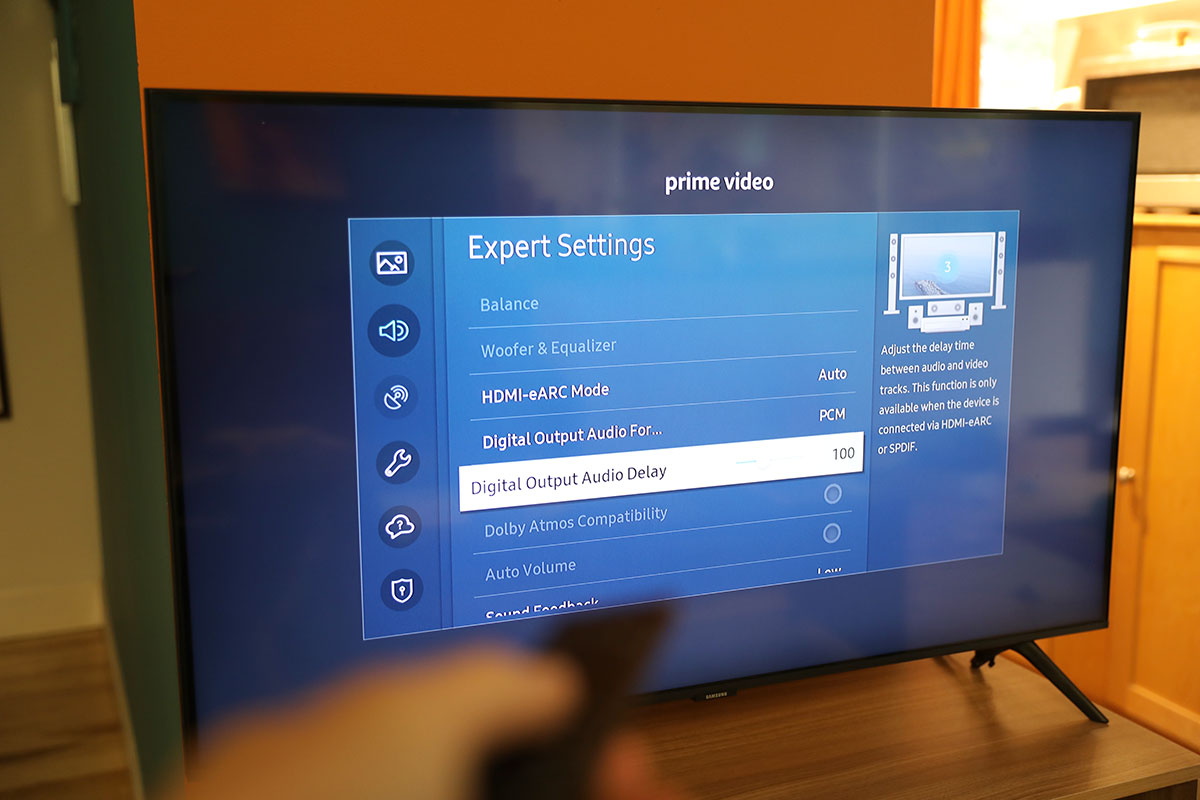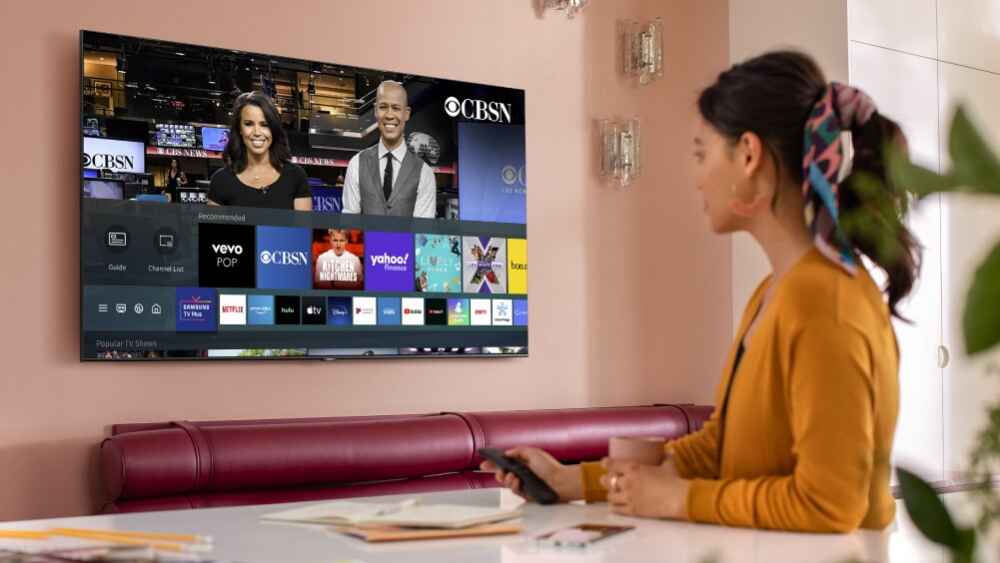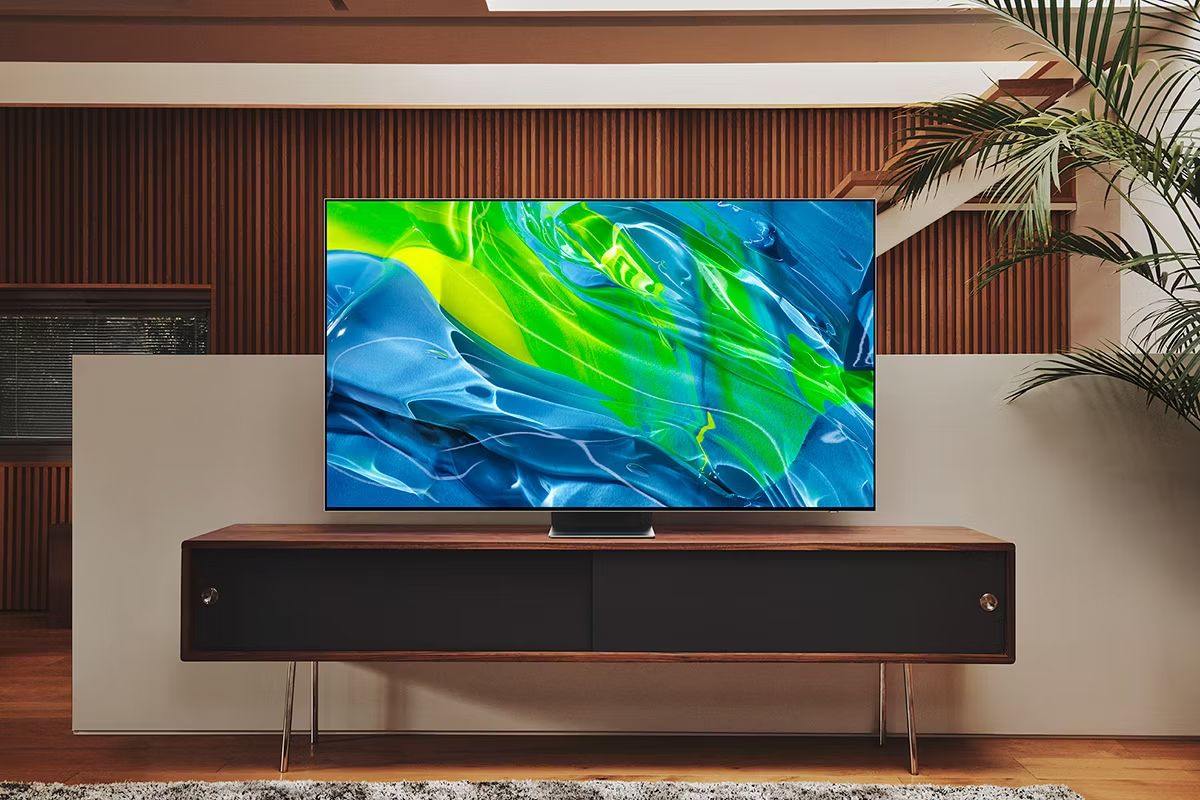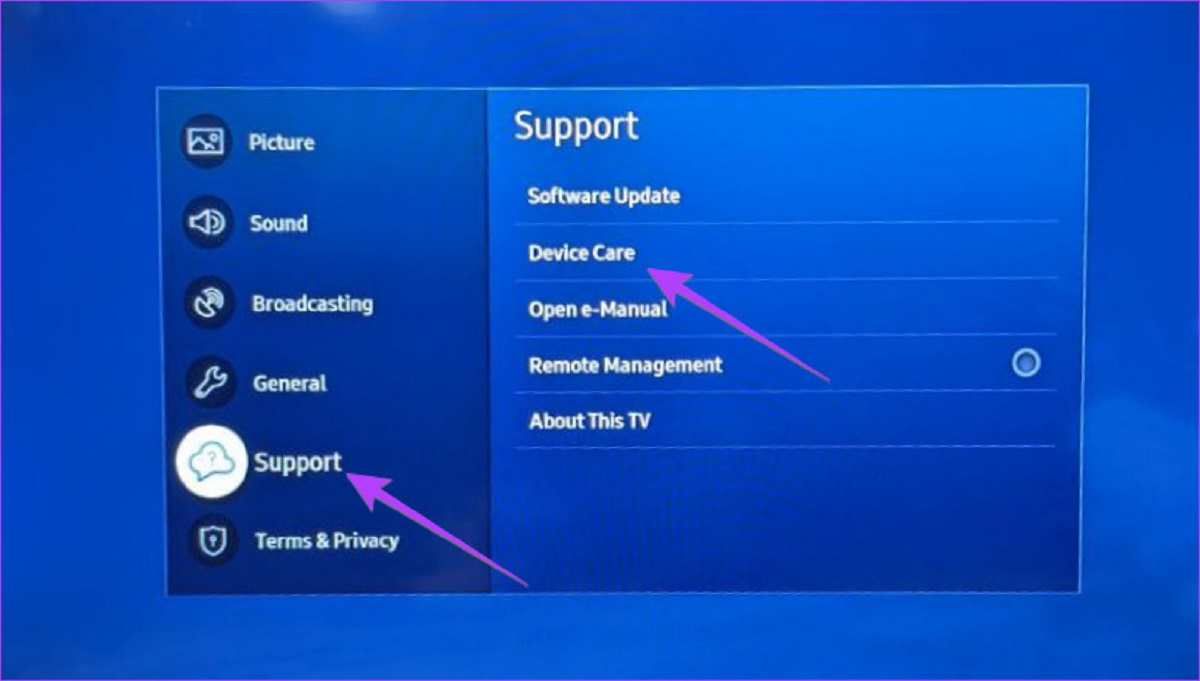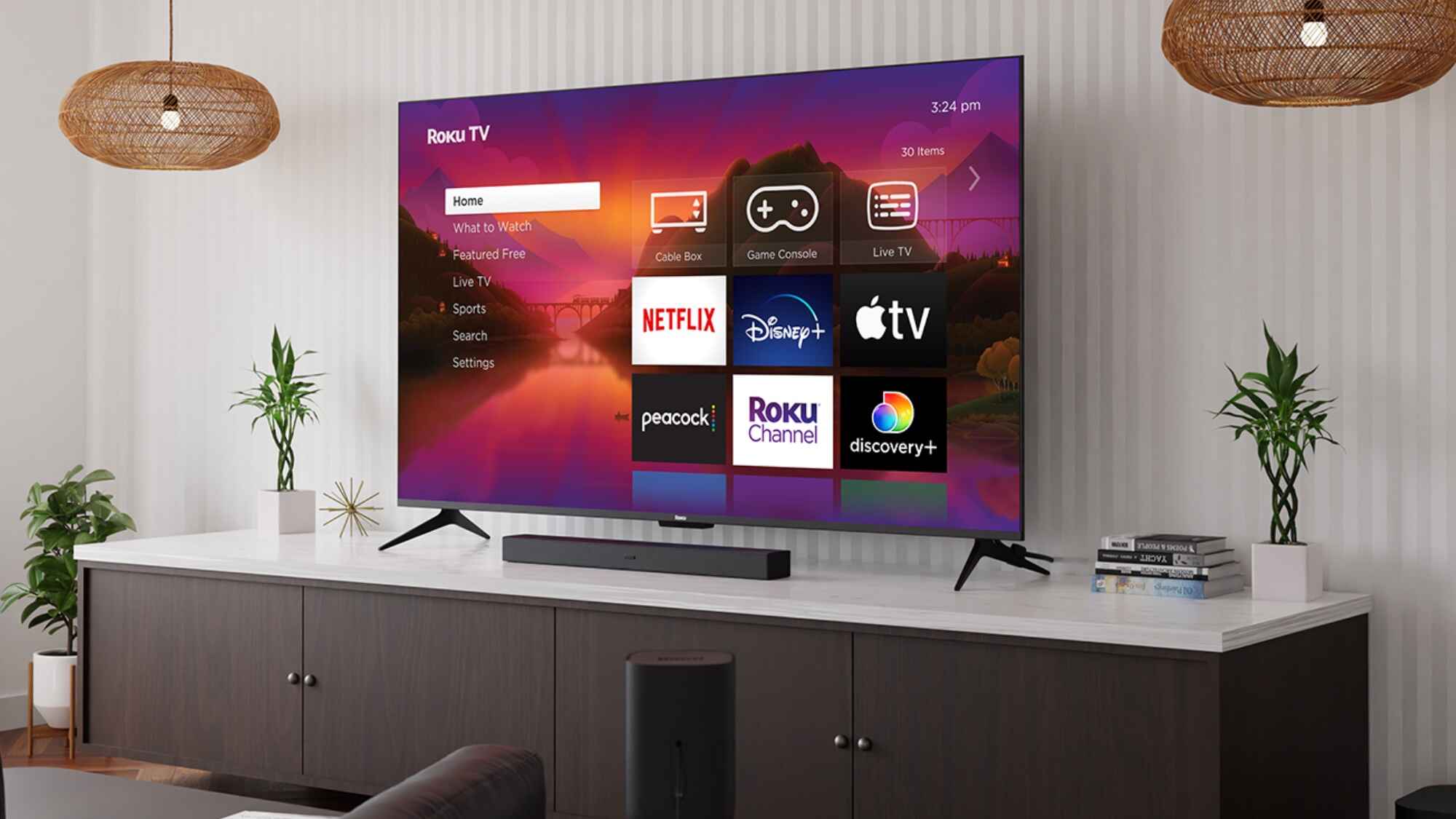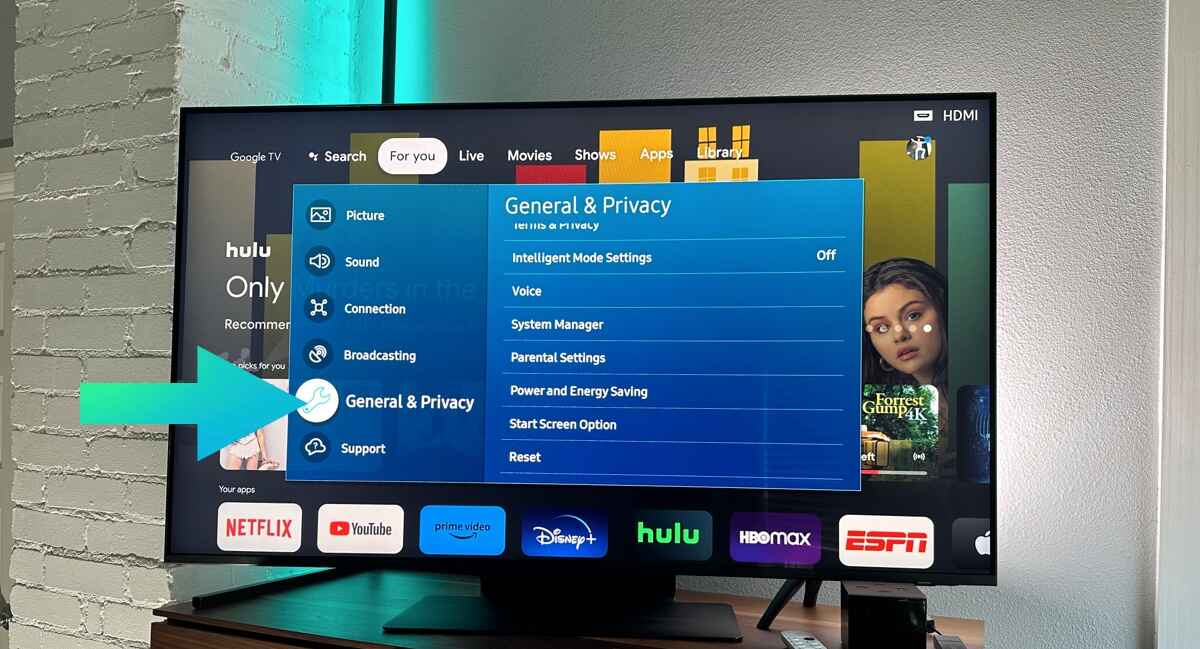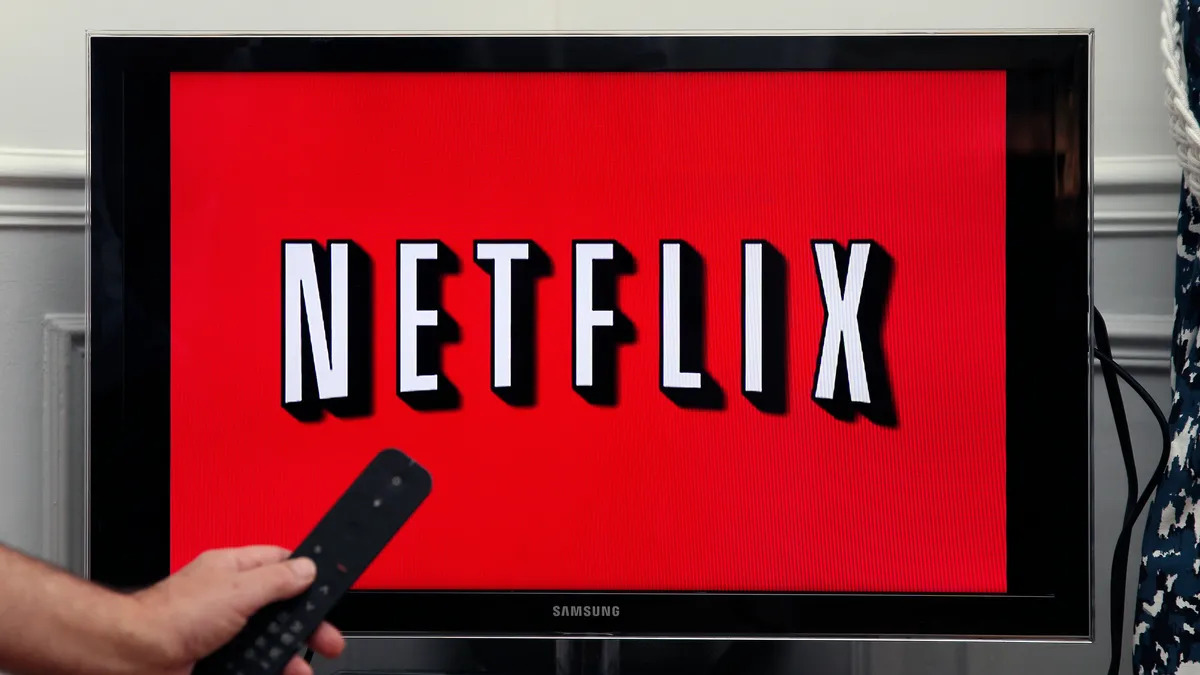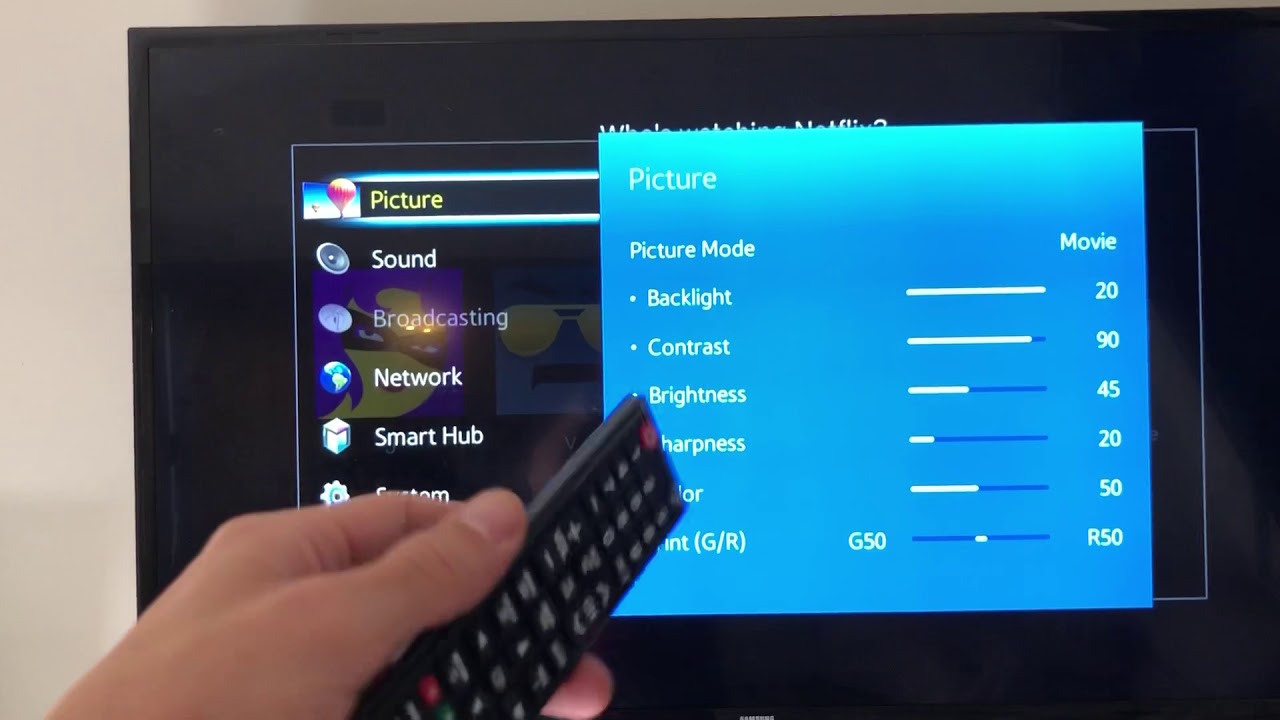Introduction
Welcome to the world of smart television, where entertainment meets technology. Samsung Smart TVs revolutionize the way we watch our favorite shows, movies, and more. However, as with any technology, you may encounter occasional performance issues, such as a slow Samsung Smart TV.
When your Smart TV starts to lag or takes longer to respond, it can be frustrating and disrupt your viewing experience. The good news is that there are several steps you can take to improve the performance of your Samsung Smart TV and get back to enjoying seamless entertainment.
In this article, we will explore some common causes of a slow Samsung Smart TV and provide you with practical solutions to enhance its speed and functionality. Whether you’re experiencing sluggish app loading times, buffering issues, or a general slowdown in performance, we’ve got you covered.
Before diving into the troubleshooting steps, it’s crucial to understand that a variety of factors can contribute to a slow Samsung Smart TV. These factors can include outdated software, excessive cache and data accumulation, network connectivity problems, suboptimal picture and sound settings, and more.
By identifying the root causes of the issue, you’ll be better equipped to tackle the problem head-on and optimize your Samsung Smart TV for optimal performance. So, let’s dive in and explore the solutions that will help you fix a slow Samsung Smart TV!
Understanding the Causes of a Slow Samsung Smart TV
Before we jump into the solutions, it’s essential to understand the potential causes behind a slow Samsung Smart TV. By identifying these factors, you can take targeted steps to address the issue and ensure a smoother viewing experience.
One common culprit for a slow Smart TV is outdated software. Just like your smartphone or computer, your Samsung Smart TV relies on software updates to improve performance and fix bugs. If you haven’t updated your TV’s software in a while, it may be running on an older version that can lead to sluggishness.
Another factor to consider is the accumulation of cache and data on your Smart TV apps. Over time, these temporary files can build up and slow down the app’s performance. Clearing the cache and data can help free up storage space and speed up your apps.
Poor network connectivity is also a possible cause of a slow Smart TV. If your TV is struggling to establish a stable connection to your home Wi-Fi network, it can result in buffering issues and delays in streaming content. Optimizing your network connection can significantly improve your TV’s performance.
Additionally, incorrect picture and sound settings can impact the speed and responsiveness of your Samsung Smart TV. Adjusting these settings to prioritize performance can make a noticeable difference.
It’s worth noting that external factors, such as high network traffic or an overloaded streaming server, can also contribute to a slow Smart TV experience. However, in this article, we will focus on troubleshooting steps that you can control directly.
Now that we have a better understanding of the potential causes behind a slow Samsung Smart TV, we can move on to the practical solutions. By following the steps outlined in the upcoming sections, you’ll be able to address these issues and regain a smooth and efficient viewing experience on your Samsung Smart TV.
Clearing Cache and Data on Samsung Smart TV Apps
One effective way to improve the performance of your Samsung Smart TV is by clearing the cache and data on the installed apps. Over time, these apps accumulate temporary files and data, which can slow down their functionality.
To clear the cache and data on your Samsung Smart TV apps, follow these steps:
- Start by pressing the Home button on your TV’s remote control to access the home screen.
- Navigate to the Settings option by using the arrow keys on your remote and press the Enter button to select it.
- In the Settings menu, find and select the Apps option. This will display a list of all the installed apps on your Smart TV.
- Select the app that you want to clear the cache and data for. You can use the arrow keys to scroll through the list.
- Once you’ve selected the app, you’ll see a menu with various options. Choose the Clear Cache or Clear Data option, depending on your preference.
- A confirmation message will appear on the screen. Select Yes to confirm your action.
- Repeat these steps for any other apps you want to clear the cache and data for.
By clearing the cache and data on your Smart TV apps, you are essentially resetting them to their default state. This process can help remove any temporary files or stored data that may be causing the app to lag or slow down.
Keep in mind that clearing the data will also log you out of any accounts or services associated with the app. For example, if you clear the data on a streaming app, you may need to log back in and reenter your credentials.
Regularly clearing the cache and data on your Samsung Smart TV apps can help maintain optimal performance and ensure a smoother user experience. It’s recommended to perform this maintenance task every few weeks or whenever you notice a decline in your TV’s performance.
Updating the Software on Your Samsung Smart TV
Keeping your Samsung Smart TV’s software up to date is crucial for optimal performance and functionality. Software updates often include bug fixes, security enhancements, and improvements to overall system performance.
To update the software on your Samsung Smart TV, follow these steps:
- Press the Home button on your TV’s remote control to access the home screen.
- Navigate to the Settings option using the arrow keys, and press the Enter button to select it.
- In the Settings menu, scroll down and select the Support option.
- Within the Support menu, select the Software Update option.
- Next, choose the Update Now option to check for available updates.
- If an update is available, your TV will begin downloading and installing the latest software.
- Once the update is complete, your TV will automatically restart.
It’s important to note that during the software update process, your TV should remain connected to a stable internet connection to ensure a successful update. If your TV is not connected to the internet, you can also perform a manual software update by visiting the Samsung Support website and downloading the latest firmware for your TV model.
Regularly updating your Samsung Smart TV’s software is essential for receiving the latest features, bug fixes, and performance enhancements. It’s recommended to check for updates once every few months to ensure that your TV is running on the latest firmware.
By keeping your Smart TV’s software up to date, you can not only improve its performance but also ensure compatibility with new apps and services, enhancing your overall viewing experience.
Resetting Your Samsung Smart TV to Factory Settings
If you’ve tried various troubleshooting steps and your Samsung Smart TV is still slow or experiencing issues, resetting it to factory settings can often help resolve the problem. Resetting your TV will restore it to its original factory state, eliminating any software conflicts or misconfigurations that may be causing the slowdown.
Please note that performing a factory reset will erase all your personalized settings, installed apps, and saved content. Make sure to back up any essential data before proceeding with the reset.
Here’s how you can reset your Samsung Smart TV to factory settings:
- Start by pressing the Home button on your TV’s remote control to access the home screen.
- Navigate to the Settings option using the arrow keys on your remote and press the Enter button to select it.
- In the Settings menu, scroll down and select the Support option.
- Within the Support menu, select the Self Diagnosis option.
- Scroll down and choose the Reset option.
- You will be prompted to enter your TV’s PIN code. If you haven’t set a PIN, the default is usually 0000.
- After entering the PIN, a confirmation message will appear on the screen. Select Yes to proceed with the reset.
- The TV will begin the reset process, which may take a few minutes. Do not turn off the TV during this time.
- Once the reset is complete, the TV will restart and display the initial setup screen.
After the factory reset, you will need to go through the initial setup process again, including connecting to your Wi-Fi network and signing in to your Samsung account. You can then reinstall your preferred apps and restore your personalized settings.
Performing a factory reset should be considered a last resort when other troubleshooting steps have been unsuccessful. It can help eliminate software-related issues and restore your Samsung Smart TV to its original performance.
Remember, before performing a factory reset, it’s a good idea to consult the TV’s user manual or visit the Samsung support website for specific instructions tailored to your model.
Optimizing the Network Connection for Your Samsung Smart TV
A stable and robust network connection is essential for a smooth streaming experience on your Samsung Smart TV. If you’re experiencing a slow TV or buffering issues, optimizing your network connection can often help improve performance.
Here are some steps you can follow to optimize the network connection on your Samsung Smart TV:
- Start by ensuring that your TV is in close proximity to your Wi-Fi router. Being closer to the router helps to minimize interference and maximize signal strength.
- If possible, connect your Smart TV to the router using an Ethernet cable instead of relying on Wi-Fi. This provides a more stable and secure connection, especially for streaming high-definition content.
- If you’re using Wi-Fi, make sure your TV is connected to a 5GHz network instead of a 2.4GHz network. The 5GHz frequency offers faster speeds and reduced interference compared to the 2.4GHz band.
- Check if other devices on your network are consuming excessive bandwidth. Streaming, downloads, and other activities can hog bandwidth and impact your TV’s performance. Consider limiting bandwidth usage on other devices or using Quality of Service (QoS) settings on your router to prioritize your TV’s traffic.
- For Wi-Fi connections, ensure that your router has the latest firmware installed. Updating the router’s firmware can address potential bugs and improve overall performance.
- Consider using a Wi-Fi range extender or a mesh Wi-Fi system if your Smart TV is located far from the router. These devices can extend the range of your Wi-Fi signal and provide a stronger connection.
- If multiple devices are connected to your network, disconnect any unnecessary devices to free up bandwidth. This can include smartphones, tablets, game consoles, or smart home devices that are not in use.
- Reset your router by turning it off, waiting a few minutes, and then turning it back on. This can help resolve any temporary network issues or conflicts.
By following these steps, you can enhance the network connection for your Samsung Smart TV, reducing buffering, improving streaming quality, and ensuring a more enjoyable viewing experience.
If you continue to experience network-related issues, you may want to contact your Internet Service Provider (ISP) to troubleshoot any potential network issues or consider upgrading your internet plan to a higher speed or more reliable connection.
Adjusting Picture and Sound Settings for Better Performance
Optimizing the picture and sound settings on your Samsung Smart TV can significantly enhance its performance and overall viewing experience. By fine-tuning these settings, you can achieve better picture quality, reduced motion blur, and improved audio clarity.
Here are some tips for adjusting the picture and sound settings on your Samsung Smart TV:
Picture Settings:
- Access the Picture Settings menu by pressing the Home button on your TV’s remote control, navigating to Settings, and selecting Picture.
- Start by adjusting the Picture Mode. Choose a mode that suits your preferences, such as Dynamic for vibrant colors, Standard for natural tones, or Movie for a cinema-like experience.
- Adjust the Brightness and Contrast settings to achieve a balanced and bright picture without washing out details or losing depth.
- Fine-tune the Color and Sharpness settings to optimize the richness of the colors and the clarity of the picture.
- Consider enabling features like HDR (High Dynamic Range) or Local Dimming if your TV supports them. These features enhance contrast and improve overall picture quality.
- Disable or reduce Motion Enhancer or Motion Smoothing settings to prevent motion blur or the soap opera effect. These settings can make the picture appear too smooth and can distract from the viewing experience.
Sound Settings:
- Access the Sound Settings menu by pressing the Home button on your TV’s remote control, navigating to Settings, and selecting Sound.
- Choose an appropriate Sound Mode, such as Standard, Movie, or Music, to suit the content you’re watching.
- Adjust the Bass and Treble settings to fine-tune the audio balance and achieve the desired sound quality.
- Consider enabling features like Surround Sound or Virtual Surround to enhance the spatial audio experience.
- If available, turn on the Auto Volume feature to maintain a consistent volume level across different programs and commercials.
Remember, the optimal picture and sound settings may vary based on your personal preferences and the specific environment in which your TV is located. Experiment with different settings, and don’t be afraid to make adjustments to suit your individual preferences.
By fine-tuning the picture and sound settings on your Samsung Smart TV, you can create a more immersive and enjoyable viewing experience, ensuring that you get the most out of your entertainment.
Regular Maintenance Tips for Your Samsung Smart TV
Performing regular maintenance on your Samsung Smart TV can help keep it running smoothly and prolong its lifespan. By incorporating these simple maintenance tips into your routine, you can ensure optimal performance and enjoyment from your TV for years to come.
Here are some regular maintenance tips for your Samsung Smart TV:
- Keep your TV’s software up to date by regularly checking for and installing available updates. These updates often include bug fixes, security patches, and performance improvements.
- Ensure proper ventilation around your TV by keeping it away from walls, enclosed spaces, or materials that can block airflow. Overheating can lead to performance issues and damage internal components.
- Clean the screen of your Smart TV regularly using a soft, lint-free cloth. Avoid using abrasive materials or harsh chemicals that can damage the screen. Gently wipe the screen in a circular motion to remove fingerprints, dust, or smudges.
- Dust the exterior of your TV and the surrounding area regularly to prevent the accumulation of dust. Dust can restrict airflow and affect the TV’s cooling system, leading to overheating.
- Keep the remote control clean by wiping it with a soft cloth occasionally. If the buttons become sticky or unresponsive, you can use a cotton swab dipped in isopropyl alcohol to clean them.
- Avoid leaving static images or bright logos on the screen for an extended period. This can cause image retention or burn-in, where faint outlines of the static image remain visible even when watching other content. Use the TV’s screensaver or turn off the screen when not in use.
- Unplug your TV during thunderstorms or if you plan to be away for an extended period. This protects your TV from power surges or possible electrical damage.
- Use a voltage regulator or surge protector to protect your TV from sudden voltage fluctuations or power surges. This can prevent potential damage to the internal components.
- Regularly check the cables and connections to ensure they are secure and in good condition. Loose or damaged cables can result in a poor audio or video signal.
- If you’re not using your Smart TV for an extended period, consider putting it in standby mode or turning it off completely. This helps conserve energy and reduces wear on the components.
By following these regular maintenance tips, you can keep your Samsung Smart TV in optimal condition and enjoy uninterrupted entertainment for years to come.
Other Troubleshooting Steps to Improve Performance
If you’ve tried the previous solutions and are still experiencing performance issues with your Samsung Smart TV, there are a few additional troubleshooting steps you can take to further improve its performance. These steps can help address specific issues that may be affecting your TV’s speed and functionality.
Here are some other troubleshooting steps to consider:
- Check the HDMI cable connections: Ensure that the HDMI cables connecting your Smart TV to external devices, such as a set-top box or gaming console, are securely plugged in. Loose or damaged cables can lead to disruptions in signal transmission and impact the TV’s performance.
- Reduce the number of connected devices: If you have multiple devices connected to your TV, such as gaming consoles, Blu-ray players, or sound systems, disconnect any unnecessary devices. Too many connected devices can put a strain on the TV’s resources and lead to a slower performance.
- Disable any unnecessary background processes: Some Smart TVs may have background processes or features running that are not essential for your usage. Check the TV’s settings menu for options to disable features like automatic updates, voice recognition, or other background processes that you don’t need. This can free up system resources and improve performance.
- Perform a power cycle: Turn off your TV, unplug it from the power source, and wait for at least a minute. Then, plug it back in and turn it on. Performing a power cycle can help refresh the system and resolve minor software glitches that may be affecting the TV’s performance.
- Check for interference: If you’re using wireless connectivity, such as Wi-Fi or Bluetooth, nearby devices or appliances may be causing interference. Try moving your Smart TV away from other electronic devices or household appliances, such as microwaves and cordless phones, to minimize potential interference.
- Contact customer support: If you’ve exhausted all troubleshooting options and are still experiencing performance issues, it may be time to contact customer support for further assistance. Samsung’s customer support team can provide specialized guidance and help resolve any underlying issues.
By taking these additional troubleshooting steps, you can further optimize the performance of your Samsung Smart TV and ensure a seamless and enjoyable viewing experience.
Remember, the specific troubleshooting steps may vary depending on your TV model and software version. Refer to the TV’s user manual or contact customer support for model-specific instructions and guidance.
Conclusion
A slow Samsung Smart TV can be frustrating, but with the right troubleshooting steps, you can improve its performance and get back to enjoying a seamless entertainment experience. In this article, we explored various causes of a slow Smart TV and provided practical solutions to address them.
We first discussed the importance of understanding the potential causes, such as outdated software, cache accumulation, network connectivity problems, and suboptimal settings. By identifying these factors, you’re better equipped to tackle the underlying issues and optimize your TV’s performance.
We then delved into specific troubleshooting steps, including clearing cache and data on your TV apps, updating the software, resetting to factory settings, optimizing the network connection, adjusting picture and sound settings, and regular maintenance tips.
Clearing cache and data on your apps helps remove temporary files and improve their performance. Updating the software ensures that you have the latest features and fixes. Resetting to factory settings can resolve conflicts and restore optimal performance.
Optimizing the network connection and adjusting picture and sound settings enhance your overall viewing experience. Regular maintenance, such as cleaning the screen, keeping the TV well-ventilated, and updating cables and connections, helps keep your TV in top shape.
Lastly, we discussed additional troubleshooting steps and the importance of contacting customer support if the issues persist.
By following these steps and incorporating them into your TV maintenance routine, you can unlock the full potential of your Samsung Smart TV and enjoy seamless and high-quality entertainment.
Remember, each TV model may have specific instructions and variations, so it’s always a good idea to consult your TV’s user manual or contact customer support for model-specific guidance.
Now, armed with these troubleshooting solutions, go ahead and optimize your Samsung Smart TV for an unparalleled viewing experience!







